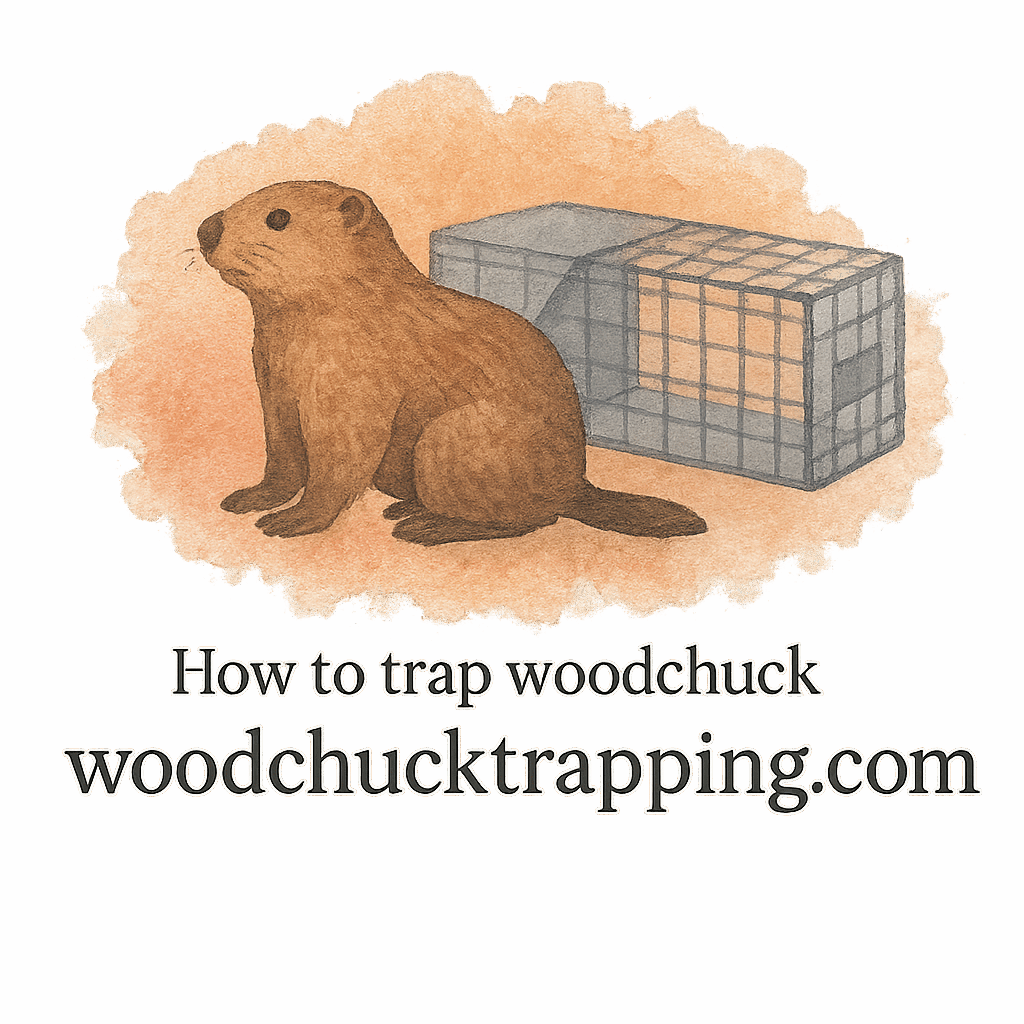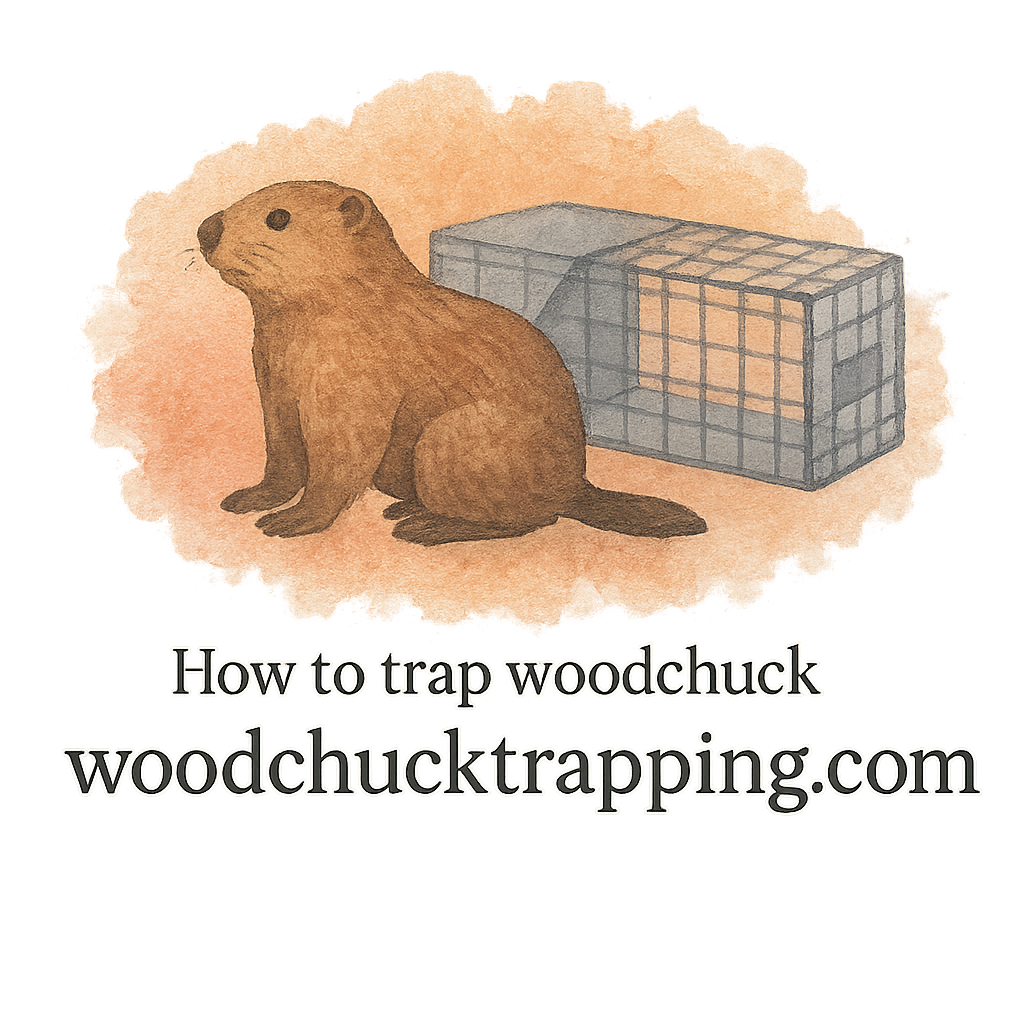Introduction
If you’ve ever walked out to your vegetable patch only to find half-eaten cucumbers, destroyed tomatoes, or burrows along the fence line, chances are you’ve met the culprit: a woodchuck. Also called groundhogs, these critters can quickly turn a thriving garden into a buffet. But here’s the good news—you don’t have to harm them to save your vegetables. In this guide, we’ll walk through 10 humane woodchuck trapping techniques that not only protect your crops but also respect wildlife.
Understanding Woodchucks
What Are Woodchucks?
Woodchucks, often confused with beavers or marmots, are burrowing rodents that belong to the squirrel family. They’re known for their love of greens, especially fresh garden vegetables. Learning about their habits is the first step to humane control. You can explore more insights about woodchuck behavior here.
Signs of a Woodchuck Infestation
How do you know you have a woodchuck problem? Look out for:
- Large burrows with dirt mounds at entrances (burrow signs).
- Flattened plants or chewed leaves.
- Tracks and droppings near your garden beds.
- Sudden damage overnight, especially to leafy vegetables.
For a complete guide, check out the signs of infestation.
Why Woodchucks Target Vegetable Gardens
Your garden is an irresistible buffet. Lettuce, beans, peas, and tomatoes rank high on their menu. Because woodchucks need to fatten up before winter hibernation, they’ll raid your crops aggressively during summer.
Importance of Humane Trapping
Why Choose Humane Methods?
Using humane woodchuck trapping techniques isn’t just about kindness—it’s about balance. Humane traps keep the animal safe, reduce stress, and allow relocation without unnecessary suffering. It’s a win-win: your vegetables survive, and the woodchuck gets a chance to live elsewhere.
Legal & Safety Considerations
Before setting any trap, check local wildlife regulations. Some states have specific laws and safety rules about capturing and relocating woodchucks. Always ensure you’re compliant.
Essential Tools for Woodchuck Trapping
Trap Gear & Equipment Reviews
The backbone of any trapping strategy is the trap itself. Compact traps, cage traps, and live traps are among the most recommended options. Explore tested equipment reviews to pick the right fit for your space.
Safety Gear: Gloves, Handling Tools
Never handle traps or animals without proper safety gear. Sturdy gloves, handling poles, and protective clothing minimize the risk of bites or scratches.

10 Humane Woodchuck Trapping Techniques
1. Selecting the Right Trap
Not all traps are created equal. The most effective are cage traps, specifically designed for medium-sized animals. Look for compact traps that fit your garden’s layout.
2. Proper Trap Placement
Placement is everything. Position traps near burrows or along frequent travel paths. Avoid random placement—it reduces your success rate.
3. Using Effective Lures & Baits
Woodchucks can’t resist apples, carrots, and leafy greens. To boost success, use specialized baiting and luring techniques that appeal to their natural diet.
4. Masking Human Scent from Traps
Woodchucks are cautious creatures. If they smell human scent, they’ll avoid the trap. Use trap scent masking techniques, or rub the trap with soil or vegetation to disguise it.
5. Timing Your Trap Setup
Woodchucks are most active early morning and late afternoon. Set traps during these windows to maximize effectiveness.
6. Checking Traps Frequently
Humane trapping means minimizing stress. Always check your traps at least twice a day. Leaving a trapped animal unattended is both inhumane and illegal in many regions.
7. Relocation with Care
Once trapped, relocate the animal carefully and release it in a safe environment. Use humane handling methods to minimize stress.
8. Preventing Future Burrows
After relocation, fill old burrow holes and block entrances. This step prevents new infestations.
9. Protecting Small Yards & Minimal Spaces
For those with small yards or minimal spaces, opt for traps designed for compact areas. This ensures efficiency without taking up unnecessary room.
10. Combining Trapping with Prevention Methods
Trapping alone isn’t enough. Pair it with damage prevention strategies like fencing, repellents, and habitat modifications.
Common Mistakes in Woodchuck Trapping
Some mistakes can ruin your efforts:
- Using the wrong bait.
- Neglecting trap maintenance.
- Ignoring local safety rules.
- Forgetting to disguise human scent.
Avoid these, and your success rate skyrockets.
Prevention Strategies Beyond Trapping
Fencing & Barriers
Installing sturdy fences 3 feet above ground and 1 foot below can block woodchucks. Check out effective trapping techniques for combining fencing with trapping.
Natural Deterrents
Garlic spray, cayenne pepper, and predator urine act as natural repellents. They make your garden less appealing without harming animals.
Garden Layout Adjustments
Plant woodchuck-resistant crops like onions or garlic around the perimeter. Think of it as building a natural “do-not-enter” sign.
Conclusion
Protecting your vegetables doesn’t mean harming wildlife. By following these 10 humane woodchuck trapping techniques, you safeguard your harvest while respecting nature’s balance. With the right tools, strategies, and a touch of patience, you can reclaim your garden and enjoy your vegetables—without guilt or damage.
FAQs
1. What’s the best bait for trapping woodchucks humanely?
Fresh fruits and veggies like apples, carrots, and lettuce work best.
2. How often should I check a woodchuck trap?
At least twice a day to ensure humane treatment.
3. Can I relocate a trapped woodchuck anywhere?
Check local laws and safety rules. Some areas restrict relocation zones.
4. Are woodchuck traps safe for pets?
Yes, if you choose properly sized trap gear and monitor frequently.
5. Do woodchucks return after relocation?
If you don’t block burrows, they might. Always fill holes and use prevention techniques.
6. What’s the most humane trap option?
Live cage traps are the most humane.
7. Can I trap woodchucks in a small yard?
Yes! Specialized traps for small yards and minimal spaces make it possible.


